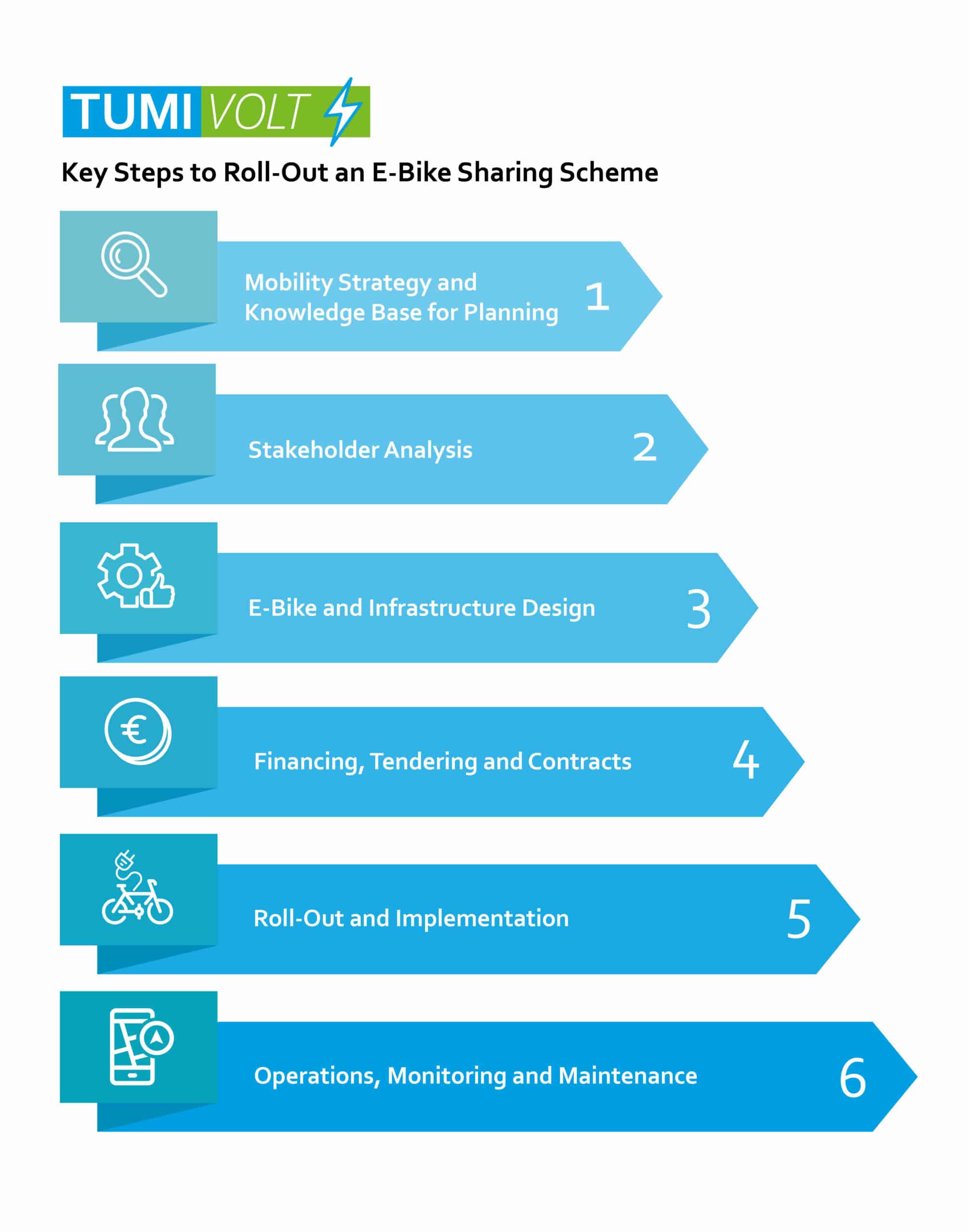Key Steps to Roll-Out an E-Bike Sharing Scheme
A step-by-step guide for the successful roll-out of an e-bike sharing scheme.
A step-by-step guide for the successful roll-out of an e-bike sharing scheme.

As the urban population continues to grow, so does the need for integrated measures to address the challenges arising from urbanisation. With the increased number of urban dwellers, the transport systems of many cities are straining, especially in developing countries and emerging economies where the development path of increasing urban populations is particularly fast. Straining transportation systems often result in increasing levels of traffic congestion, noise pollution or negative impacts on traffic flows as well as the safety and health of citizens. Many cities around the world have recognised the problem and are already taking measures to improve urban mobility, e.g. by trying to shift from a rather car-centric development to providing viable mobility alternatives such as improved public transport systems, as well as better cycling and walking infrastructure.

Many cities are taking measures to improve cycling infrastructure, aiming to make cycling a viable mode of transport. To get people do more trips on bikes, more than 600 cities worldwide have implemented their own bike-sharing scheme allowing locals and tourists to enjoy the benefits of cycling without the costs and responsibilities associated with ownership. In recent years electric-bike sharing schemes have become a valuable alternative to lower the barrier to cycling even more, making it more comfortable and accessible for different types of user groups. At the same time, with the implementation of such schemes new challenges occur, such as required charging infrastructure and different ways of maintenance. The following steps provide guidelines for relevant stakeholders to support the step by step e-bike sharing scheme implementation in cities, helping to transform urban mobility.
Step-by-Step Guide: Key Steps to Roll-Out an E-Bike Sharing Scheme
E-Mail Address:
info@transformative-mobility.orgYou need to load content from hCaptcha to submit the form. Please note that doing so will share data with third-party providers.
More InformationYou need to load content from reCAPTCHA to submit the form. Please note that doing so will share data with third-party providers.
More InformationYou are currently viewing a placeholder content from Turnstile. To access the actual content, click the button below. Please note that doing so will share data with third-party providers.
More Information